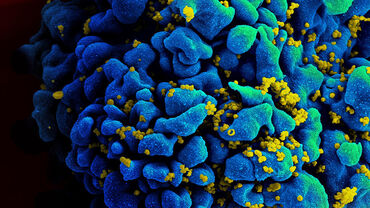HIV testing in Europe and Central Asia - Monitoring implementation of the Dublin Declaration on partnership to fight HIV/AIDS in Europe and Central Asia: 2022 progress report
This report presents the situation of HIV testing in Europe and Central Asia, summarising data on the implementation of national guidelines that shape HIV testing policies, the provision and uptake of HIV testing services and efforts being made to widen engagement with HIV testing and reduce late diagnosis. In the reporting year 2022, responses were submitted to ECDC from 51 of the 55 European and Central Asian countries (Andorra, Liechtenstein, Türkiye and Turkmenistan provided no data).
Erratum: 18 September 2023 – the chart representing Prisoners in Figure 3 was corrected.
Executive Summary
Only 83% of people living with HIV (PLHIV) across Europe and Central Asia know their HIV status, highlighting a need to strengthen and expand testing services. In the EU/EEA, approximately 89% of PLHIV know their HIV status.
Forty countries reported having national guidelines for HIV testing, however, a third of reporting countries indicated their guidance was over five years old. Half of countries with guidance over five years old reported no plans to revise guidance.
There is a wide range of testing interventions implemented across the region. Despite recent increases in the levels of implementation of novel, innovative testing modes, such as home testing and lay provider testing, traditional, clinic-based testing interventions remain among the most implemented across Europe and Central Asia.
Legal and regulatory barriers to HIV testing continue to exist across Europe and Central Asia, with thirty-three countries reporting restrictions on who can administer an HIV test and eight countries reporting restricted access for HIV tests for certain populations.
Data on the uptake of HIV testing among key populations was limited, especially for migrants, undocumented migrants and transgender people.
Providing HIV testing services with suboptimal linkage to care has limited benefits, therefore clear time standards and referral pathways are important, especially with increasing levels of testing in non-traditional settings. Forty-three countries have linkage to care recommendations and twenty-three countries were able to provide data on the proportion of people promptly linked to care, with rates ranging from 76% to 100%.
The COVID-19 pandemic and resultant public health measures negatively impacted the provision and uptake of HIV testing, with countries reporting reduced testing services and increased difficulties accessing testing.







